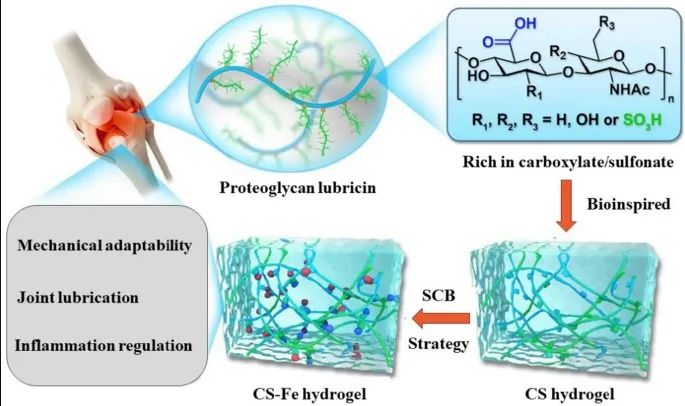引文信息:
Mohammad Javan Almasi & Dangsheng Xiong.Recent Progress in Bionic Hydrogels for Articular Cartilage: Tribological and Mechanical Characteristics. Journal of Bionic Engineering,2024,21(2),653- 673.
Recent Progress in Bionic Hydrogels for Articular Cartilage: Tribological and Mechanical Characteristics
Mohammad Javan Almasi & Dangsheng Xiong
School of Materials Science and Engineering, Nanjing University of Science and Technology, Nanjing, 210094, China.
Abstract
Cartilage regeneration and repair are considered clinical challenges since cartilage has limited capability for reconstruction. Although tissue-engineered materials have the ability to repair cartilage, they have weak mechanical characteristics and cannot resist long-term overload. On the other hand, surgery to replace the joint is frequently done to treat significant cartilage deterioration these days. However, the materials that are being used for replacement have high friction coefficients, lack shock absorption functions, and lack cushioning. Further research on natural articular cartilage structure and function may lead to bionic hydrogels, which have suitable physicochemical and biological characteristics (e.g., tribological and mechanical properties and the ability to support loadbearing capability), but need improvements. Based on their tribological and mechanical characteristics, the current review highlights the most recent advancements of bionic hydrogels used for articular cartilage, highlighting both the field's recent progress and its potential for future research. For this reason, firstly, some important property improvement methods of bionic hydrogels are discussed and then, the recent findings of various research on the making of those bionic materials are provided and compared. It seems that by using some modifications such as product design, surface treatments, animal tests, controlling the isoelectric point of hydrogels, and computer simulation, the intended mechanical and tribological characteristics of natural articular cartilage may be attained by the bionic hydrogels.

Fig. W1 Chemically connected DN hydrogels prepared by employing a two-step polymerization process.

Fig. W2 Mechanical flexibility, lubrication of joints, control of inflammation, and creation of CS and CS-Fe hydrogels.

Fig. W3 a Articular cartilage lubrication system b Schematic of the composite-LP preparation: (I) benzophenone treatment, (II) Polymerization and UV-initiated interface bonding, and (III) SSI-ATRP. c The hydrogel network, polymer brush chains and the elastomer network chemical structures.

Fig. W4 Structure of PEEK-PAA-PVA-cationic composite.
Information Publisher: Mohammad Javan Almasi & Dangsheng Xiong
Information Source: https://rdcu.be/dCMat

